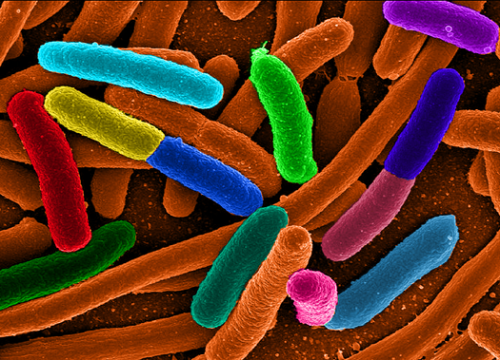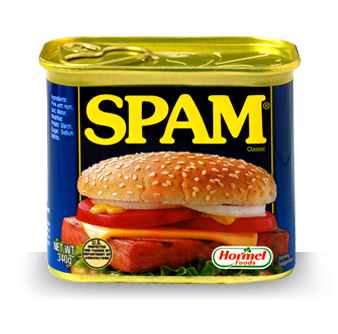Modern Super-Spies Like Bacterial Invisible Ink
There wouldn’t be so many spy novels if there weren’t something so delightfully compelling about the idea of being a spy: you’re invited to imagine that your job is to sneak around in a trench coat and fedora, talking out of the side of your mouth and pretending to be something or someone you’re not in order to gather information on behalf of the resistance.
Knowing something you’re forbidden to know, or that other people want to know but don’t – or that other people don’t think you know, imparts a feeling of power and control that is like fresh, unadulterated catnip to a newborn kitten: heady stuff.
Image courtesy mike.shannonandmike.net
When I was younger I spent a lot of time writing cryptic messages in lemon juice on slips of computer paper – which at that time came in continuous sheets bordered by strips with holes and was divided by perforations for use in dot matrix printers. These messages could be passed with great stealth to friends in the school yard, who would then hold the paper over a heat source to reveal the messages. In the presence of heat, the acid in the lemon juice made the paper turn brown wherever it had been applied, thereby allowing dedicated ten year-olds to let each other know that someone had recently acquired a Barbie house.
I guess these days ten year-olds just text or email each other, which is great because it leaves more lemons for lemonade stands and other entrepreneurial activities. But I am pretty sure the researchers who developed SPAM grew up in a time where analog methods were used to exchange information. SPAM stands for “stenography by printed arrays of microbes” and it has nothing whatsoever to do with canned meat products. The idea is that messages are encoded in colors of glowing bacteria, and they can be unlocked with antibiotics.
Image courtesy wikimedia commons
People have been encoding secret messages in living molecules for a while, but SPAM is unique among these methods because it’s simple: it requires “no gene sequencing equipment, microscopes, or other scarce and expensive laboratory gear to extract the coded message. Some simple LEDs and a smartphone would suffice, allowing the recipient to receive the printed microbes through the mail and quickly and easily unlock the message” (Dillow). So maybe it’s a viable option for ten year-olds after all.
The research team inserted fluorescent proteins into seven different strains of the amazingly useful Escherichia coli bacteria, so that they would each glow in one of seven different colors under the right light. The engineered bacterial were then grown in sequences of paired dots that represented numbers or letters and imprinted on a sheet of nitrocellulose (Dillow). This meant that the message could be sent through the post like any other highly flammable piece of paper.
Image courtesy spam.com
The recipient of the message simply regrows the bacteria, places it under the right kind of light or exposes it to antibiotics, and BAM – the coded message reveals itself. The researchers were able to tune the bacteria to only express colors after a specific period of time, to respond to specific antibiotics and not others, and they even created a strain that would die off after a certain period of time. To put it another way: this means that the message could literally self destruct in five seconds, which makes me absurdly happy (possibly because I’ve watched a LOT of Mission: Impossible over the years.
Although this messaging system is as cool as a tiger frolicking in the cool waters of a river in Southeast Asia, there are some issues: for one thing, a finite number of antibiotics presently exist in the world so messages could be decoded by a straightforward process of trial and error. The researchers behind the technology aren’t troubled by this limitation because they’re less interested in spy drama than you’d expect: “they’re more interested in developing new ways to watermark genetically modified organisms with ‘biological barcodes’ to protect intellectual property and make the world safer for modified life” (Dillow).
I was disappointed to learn that the bacteria are essentially a glowing copyright notice, but the fact remains that this development is rife with potential. In fact, I’m not going to say how I know this but I just found out that someone very close to you recently acquired a Barbie house.
I am filing super-spy bacterial invisible ink under water and earth.
Cited:
Dillow, Clay. “By Encoding Messages in Glowing Proteins, Scientists Turn E. Coli Into Invisible Ink.” Popsci.com 09/27/11. Accessed 10/05/11. URL.



















Very interesting article
Leave a Wordpress Comment: